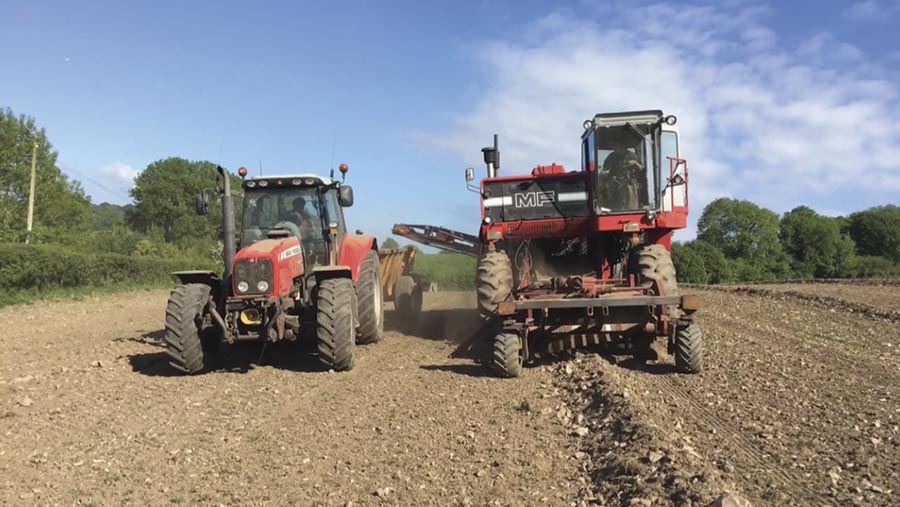Stonebine rock picker is 2020 inventions winner

The Stonebine, built by Jack Bailey and his colleagues at Dorset-based contractor and engineer GJ Agri, is our 2020 inventions competition champion.
The quirky converted combine was designed to harvest an unusual crop – flint from fields north of Lyme Regis.
Having scoured the market for a suitable stone-picker, he could only find machines that used spring-loaded tines to flick rocks into a big hopper.
However, this is no good for the farm’s building-grade flint stone – worth £65/t in good condition – as it tends to deliver a dirty sample.
See also: Inventions Competition 2019: Drills and cultivators on a budget
The sprung tines also have a habit of cracking the flint, obliterating its sell-on value and leaving razor-sharp shards across the field.
So, after five years of planning, the team at GJ Agri got to work building their own hopper-less version.
The priority was a self-propelled machine with a side cab that would leave ample space for the elevator to run under the engine, so when a 1970s Massey Ferguson 500 series combine came up for sale, they snapped it up.
The donor machine, on a little under 4,000 hours, was stripped almost bare – the only major components that remained unmoved were the engine, front axle and hydrostatic drive.
Major surgery included fitting chassis rails that extended the combine to form enough space for the screening system.
Watch a video below of the Stonebine in action and read the rest of the report below:
The picking and processing elements include a second-hand Reekie 300 SA digging rotor and web, and an Extec 5000 elevator.
One of the biggest expenses was a trommel screen, which was home-built because there was nothing reasonably priced on the second-hand market.
Power to a new triple-stack hydraulic pump arrangement comes via the combine’s old threshing drum drive belts.
This runs oil to separate hydraulic motors on the auxiliary services, including the trommel and front and rear elevators.
The flow to each can be altered using an external control valve, and functions can be turned on and off via in-cab switches.
In work, the engine runs at full chat – roughly 2,100rpm – and forward speed is determined by the quantity of stone.
Lifting rowed-up flint from a 7m band limits progress to roughly 1kph, but it can get up to 3kph when picking straight from the ground across its 2m working width.
To give an idea of output, it picked roughly 1,250t of flint from a 4ha field in one day, some of which was already raked into a line.
Now the idea has been tried and tested, Mr Bailey plans to improve its aesthetics, and it will eventually be tidied up, shot-blasted and painted.

